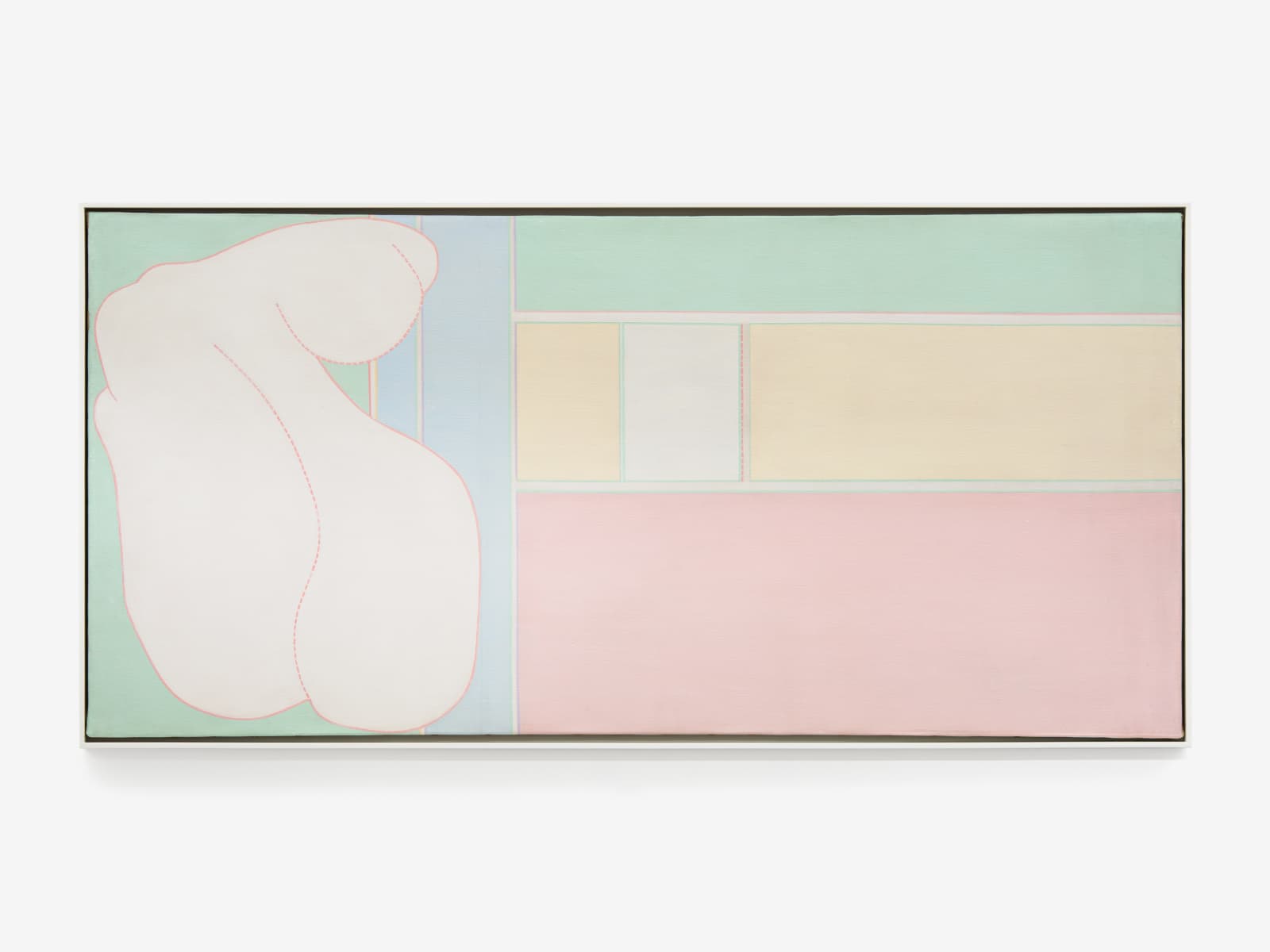



Hannah Wilke
Untitled, c. late 1960s
Acrylic on canvas
63.6 x 129.3 cm, 25 1/8 x 50 7/8 in, framed
© Marsie, Emanuelle, Damon and Andrew Scharlatt, Hannah Wilke Collection & Archive, Los Angeles. Licensed by VAGA at Artist’s Rights Society (ARS), New York, DACs, London
Further images
1. In later works from the 1960s, Wilke opened and lightened her compositions, with air and space contributing their potential suggestions of movement. Despite a shift in style, we see...
1. In later works from the 1960s, Wilke opened and lightened her compositions, with air and space contributing their potential suggestions of movement. Despite a shift in style, we see the same bulging forms infused with bodily connotations, although now streamlined.
2. This is one of her compositions of horizontal strips flooded by subtle pastel colours and interrupted by a free-flowing, biomorphic form.
3. HW on her work in this period: ‘I can almost see the rigid structure of Frank Stella’s work in my drawings, but making them in 1965, I probably hadn’t seen Stella’s work yet. And Stella is not much older than me. The problem of women is not having the courage to push themselves like men. But, finally, I realised, “Ahem. Excuse me, I’d like to be in the Museum of Modern Art, also”, and you respect what you’re doing.’ (Hannah Wilke in conversation with Cindy Nemser, 1975, as published in Hannah Wilke: Art for Life’s Sake)
4. HW on her use of pastel: 'You asked me about pastel drawings. Pastel laundry rooms, women’s rooms, children’s rooms, and bathrooms: why don’t they look good? Why should people be embarrassed by delicacy or lack of colour? It’s like the difference between rock and roll and Beethoven; you have to listen to it. You have to look at my art a little longer because it’s fragile and delicate and you can’t see the colours clearly. One must look at my work because there are differences. Maybe I’m more demanding.’ (Hannah Wilke in conversation with Cindy Nemser, 1975, as published in Hannah Wilke: Art for Life’s Sake)
2. This is one of her compositions of horizontal strips flooded by subtle pastel colours and interrupted by a free-flowing, biomorphic form.
3. HW on her work in this period: ‘I can almost see the rigid structure of Frank Stella’s work in my drawings, but making them in 1965, I probably hadn’t seen Stella’s work yet. And Stella is not much older than me. The problem of women is not having the courage to push themselves like men. But, finally, I realised, “Ahem. Excuse me, I’d like to be in the Museum of Modern Art, also”, and you respect what you’re doing.’ (Hannah Wilke in conversation with Cindy Nemser, 1975, as published in Hannah Wilke: Art for Life’s Sake)
4. HW on her use of pastel: 'You asked me about pastel drawings. Pastel laundry rooms, women’s rooms, children’s rooms, and bathrooms: why don’t they look good? Why should people be embarrassed by delicacy or lack of colour? It’s like the difference between rock and roll and Beethoven; you have to listen to it. You have to look at my art a little longer because it’s fragile and delicate and you can’t see the colours clearly. One must look at my work because there are differences. Maybe I’m more demanding.’ (Hannah Wilke in conversation with Cindy Nemser, 1975, as published in Hannah Wilke: Art for Life’s Sake)
Provenance
The ArtistMarsie, Emanuelle, Damon, and Andrew Scharlatt, by descent
Hannah Wilke Collection & Archive, Los Angeles



